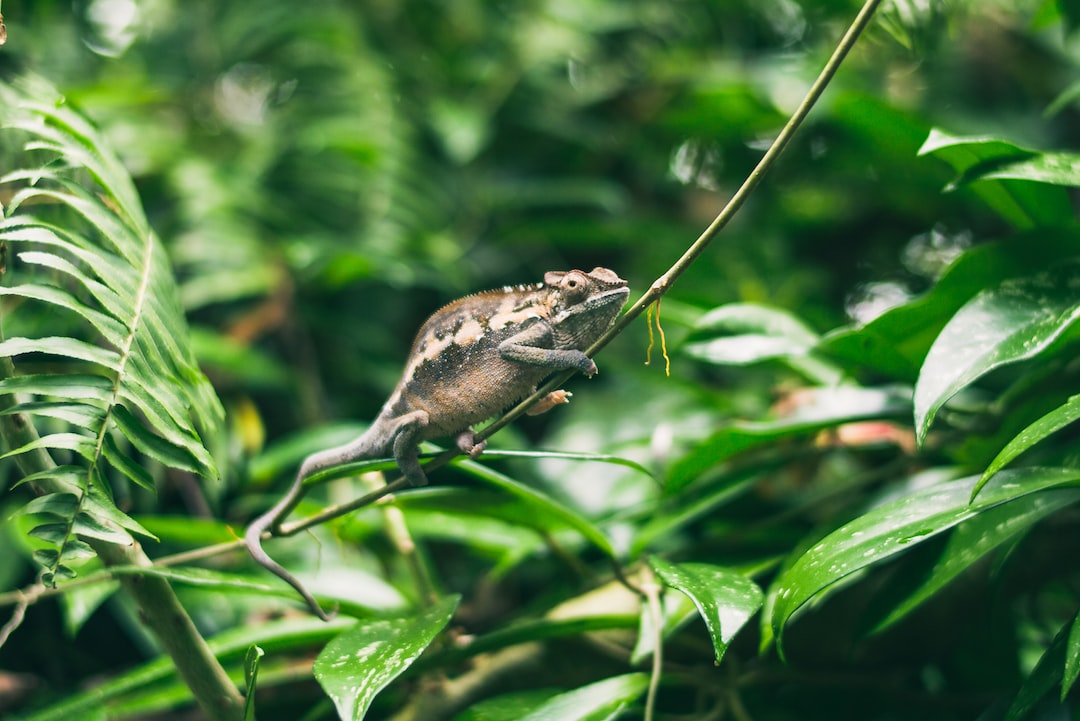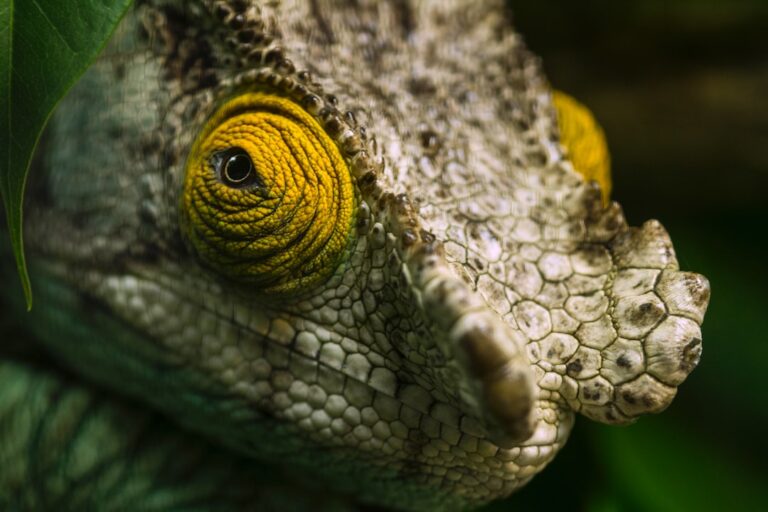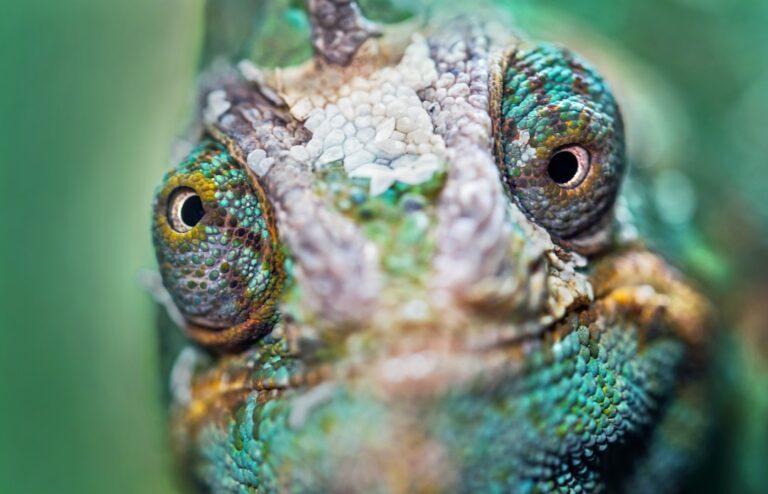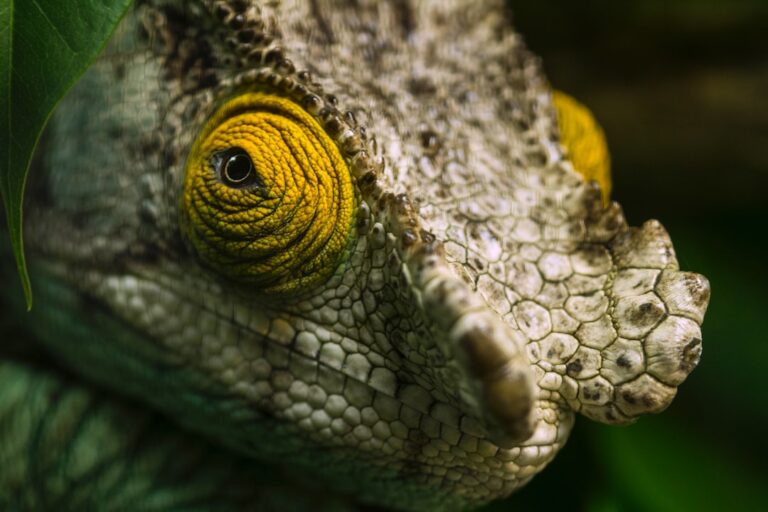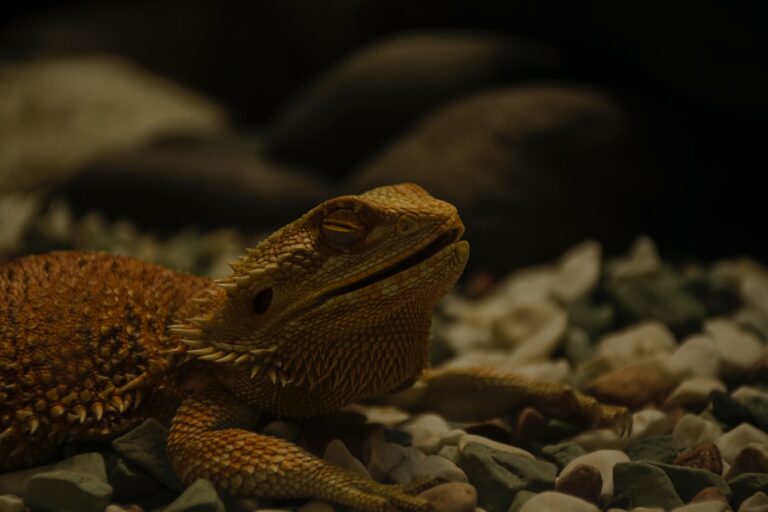Can Chameleons Become Overweight?
Chameleons are fascinating creatures known for their ability to change color and blend into their surroundings. They are reptiles that belong to the family Chamaeleonidae and are native to Africa, Madagascar, and parts of southern Europe and Asia. Chameleons have unique dietary needs that must be met in order for them to thrive in captivity.
In the wild, chameleons primarily feed on insects such as crickets, grasshoppers, and flies. They use their long, sticky tongues to catch their prey, which they then consume whole. Some larger species of chameleons may also eat small birds or other reptiles. It is important for chameleon owners to replicate this diet as closely as possible in order to ensure the health and wellbeing of their pets.
Table of Contents
Understanding Chameleon Metabolism
Understanding chameleon metabolism is crucial for proper weight management. Chameleons have a relatively slow metabolism compared to other reptiles, which means they require less food to maintain their energy levels. This is because they have adapted to survive in environments where food may be scarce.
Chameleons also have a unique ability to regulate their body temperature by basking in the sun or seeking shade. This thermoregulation process affects their metabolism, as they require more energy when they are actively basking and less energy when they are resting.
It is important for chameleon owners to understand these metabolic processes in order to provide the appropriate amount of food and ensure that their pets maintain a healthy weight.
Signs of Overweight Chameleons
Monitoring a chameleon’s weight is essential for detecting signs of obesity. Overweight chameleons may exhibit physical signs such as a bulging belly, difficulty moving or climbing, and lethargy. Their skin may also appear stretched or saggy.
In addition to these physical signs, overweight chameleons may also have difficulty shedding their skin properly. This can lead to skin infections or other dermatological issues.
It is important for chameleon owners to regularly weigh their pets and monitor their body condition in order to detect any signs of obesity early on.
Causes of Chameleon Obesity
There are several common causes of chameleon obesity that owners should be aware of. One of the main causes is overfeeding. Chameleons have small stomachs and do not require large amounts of food. Overfeeding can lead to excess weight gain and other health issues.
Another common cause of chameleon obesity is a lack of exercise. Chameleons are arboreal creatures that require ample space to climb and move around. If they are kept in small enclosures or do not have access to branches or perches, they may become sedentary and gain weight.
Lastly, improper diet can also contribute to chameleon obesity. Feeding chameleons a diet that is high in fat or lacks essential nutrients can lead to weight gain and other health problems.
Identifying and addressing these underlying causes is crucial for managing chameleon obesity and promoting overall health.
Health Risks Associated with Overweight Chameleons
Obesity in chameleons can have serious health consequences. Excess weight puts strain on their internal organs, which can lead to organ failure or other complications. Overweight chameleons may also have difficulty regulating their body temperature, which can lead to heat stress or other thermoregulation issues.
Obesity can also impact a chameleon’s ability to move and climb, which can lead to muscle weakness or loss of mobility. This can further exacerbate their weight gain and overall health.
In addition, overweight chameleons are more prone to developing respiratory infections, skin infections, and other health issues. These conditions can be difficult to treat and may require veterinary intervention.
Preventing and managing obesity in chameleons is crucial for their overall health and wellbeing.
How to Prevent Chameleon Obesity
Preventing chameleon obesity starts with proper feeding and care practices. Chameleons should be fed a diet that is appropriate for their species and age. This typically consists of a variety of insects such as crickets, mealworms, and waxworms. It is important to provide a balanced diet that includes a variety of nutrients.
Feeding should be done in moderation, as overfeeding can lead to obesity. Chameleons should be fed small amounts of food several times a week, rather than large meals all at once. This allows them to digest their food properly and prevents overeating.
Proper hydration is also important for preventing obesity in chameleons. They should have access to clean water at all times, either through a water dish or a misting system.
Recommended Feeding and Care Practices
In addition to proper feeding practices, chameleons also require a suitable habitat that allows for exercise and natural behaviors. They should be housed in spacious enclosures that provide ample climbing opportunities, such as branches or perches. The enclosure should also have proper lighting and temperature gradients to allow for thermoregulation.
Chameleons should be provided with regular opportunities for exercise and physical activity. This can be achieved through supervised free-roaming time outside of their enclosure or by providing them with toys or enrichment activities within their enclosure.
Regular veterinary check-ups are also important for monitoring chameleon health and detecting any underlying issues early on. A veterinarian who specializes in reptiles can provide guidance on proper care practices and address any concerns or questions.
Importance of Exercise and Physical Activity for Chameleons
Exercise and physical activity are essential for the overall health and wellbeing of chameleons. Regular movement helps to maintain muscle tone and prevent weight gain. It also stimulates their natural behaviors and provides mental stimulation.
Chameleons should be provided with opportunities for exercise and physical activity on a daily basis. This can include supervised free-roaming time outside of their enclosure, where they can climb and explore their surroundings. It is important to ensure that the area is safe and free from potential hazards.
Within their enclosure, chameleons can be provided with toys or enrichment activities that encourage movement and mental stimulation. This can include items such as branches, perches, or climbing structures.
Consultation with a Veterinarian for Chameleon Health Concerns
If a chameleon owner notices any signs of obesity or other health concerns, it is important to consult with a veterinarian who specializes in reptiles. A veterinarian can provide a thorough examination and determine the underlying cause of the issue.
They may recommend dietary changes, adjustments to the chameleon’s habitat, or other interventions to address the problem. Regular veterinary check-ups are also important for monitoring chameleon health and detecting any potential issues early on.
Conclusion and Final Thoughts on Chameleon Weight Management
Proper weight management is crucial for the health and wellbeing of chameleons. Understanding their unique dietary needs, metabolism, and exercise requirements is essential for preventing obesity and promoting overall health.
By providing a balanced diet, proper care practices, and opportunities for exercise and physical activity, chameleon owners can help ensure that their pets maintain a healthy weight and live a long, happy life. Regular monitoring and veterinary check-ups are also important for detecting any potential issues early on and addressing them promptly.
Taking the time to understand and address chameleon weight management is an important part of responsible pet ownership. By providing the proper care and attention, chameleon owners can help their pets thrive in captivity.
If you’re interested in learning more about reptiles, you might also enjoy reading the article “Can Iguanas Breathe Underwater?” on Reptile Friend’s website. It explores the fascinating ability of iguanas to hold their breath and survive underwater for extended periods of time. To check out this intriguing article, click here.

